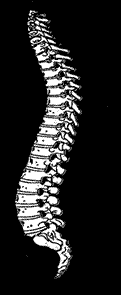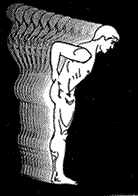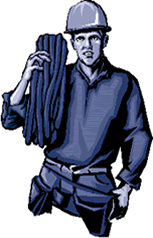BACK BELTS – Do They Prevent Injury? (94-127) | NIOSH | CDC
Nội Dung Chính
BACK BELTS – Do They Prevent Injury?
October 1996
DHHS (NIOSH) Publication Number 94-127

The National Institute for Occupational Safety and Health (NIOSH) is part of the Centers for Disease Control and Prevention (CDC) within the Department of Health and Human Services. NIOSH is the federal Institute responsible for conducting research and making recommendations for the prevention of work-related injuries and illnesses.
What Is the Purpose of This Pamphlet?
Back injuries account for nearly 20% of all injuries and illnesses in the workplace and cost the nation an estimated 20 to 50 billion dollars per year. The National Institute for Occupational Safety and Health (NIOSH) believes that the most effective way to prevent back injury is to implement an ergonomics program that focuses on redesigning the work environment and work tasks to reduce the hazards of lifting.
However, in response to the increasing human and economic costs of back injury, companies have implemented numerous other measures, either in conjunction with or in place of sound ergonomics programs. For instance, there has been a dramatic increase in the use of industrial back belts.
The decision to wear a back belt is a personal choice; however, NIOSH believes that workers and employers should have the best available information to make that decision. This pamphlet outlines the current state of scientific knowledge on back belts and stresses the importance of an overall ergonomics program. Companies should not rely on back belts as a “cure all” for back injury, but should begin to undertake prevention measures which reduce the risks of lifting tasks.
Do Back Belts Prevent Injury?

In recent years, there has been a dramatic increase in the number of workers who rely on back belts to prevent injury during lifting. Back belts, also called “back supports” or “abdominal belts,” are currently worn by workers in numerous industries, including grocery store clerks, airline baggage handlers, and warehouse workers. As their use has risen, NIOSH has increasingly been asked for advice on back belt selection. In response to these inquiries, the Institute decided to address a more fundamental question. Rather than ask “Which belt will best protect workers?” NIOSH researchers began with the question–“Do back belts protect workers?”
Employers relying on back belts to prevent injury should be aware of the lack of scientific evidence supporting their use.
A Lack of Scientific Support
After a review of the scientific literature, NIOSH has concluded that, because of limitations of the studies that have analyzed workplace use of back belts, the results cannot be used to either support or refute the effectiveness of back belts in injury reduction. Although back belts are being bought and sold under the premise that they reduce the risk of back injury, there is insufficient scientific evidence that they actually deliver what is promised.
The Institute, therefore, does not recommend the use of back belts to prevent injuries among workers who have never been injured.* If you or your workers are wearing back belts as protective equipment against back injury, you should be aware of the lack of scientific evidence supporting their use.
* Because the Institute’s primary focus is on the prevention of injury, NIOSH did not address the use of back belts as medical treatment during rehabilitation from injury.
How Did NIOSH Come to These Conclusions About Back Belts?
NIOSH systematically reviewed published peer-reviewed scientific literature on back belts to determine if they actually reduce the risk of back injury. Because there were few studies on the association between workplace use of back belts and injuries, NIOSH also reviewed studies of the relationship between back belt use and forces exerted on the spine during manual lifting. In other words, much of the existing research is based on theories of what causes back injury, rather than on the actual rates of workplace injury with and without back belt use.
For a detailed technical report on the studies NIOSH reviewed, call 1-800-35-NIOSH to request “Workplace Use of Back Belts: Review and Recommendations” (Publication No. 94-122).
What About the Claims That Back Belts…
Reduce internal forces on the spine during forceful exertions of the back?
Increase intra-abdominal pressure (IAP), which may counter the forces on the spine?
Stiffen the spine, which may decrease forces on the spine?
Restrict bending motions (range of motion)?
Remind the wearer to lift properly?
Have reduced injuries in certain workplaces?
While all of these claims have been put forth as support for the use of back belts, they remain unproven. There is currently inadequate scientific evidence or theory to suggest that back belts can reduce the risk of injury. Moreover, even if back belts produced the biomechanical effects listed above, there is no proven link to injury prevention.
NIOSH searched the peer-reviewed literature for studies investigating these claims and evaluated the scientific evidence they produced. A summary of the findings is provided on the following pages.
I Heard That Back Belts…
Reduce Forces on the Spine
Lifting may produce a variety of forces within the body which contribute to the pressure on the spine, termed “loading.” Many of the studies NIOSH reviewed sought to examine the impact of back belt use on loading. None of the studies provide sufficient data to indicate that industrial back belts significantly reduce loading during lifting. In fact, there is little evidence to suggest that these forces could be reduced with a back belt.
Increase Intra-Abdominal Pressure (IAP)
While this theory remains controversial, some believe that if the pressure is increased within the abdomen, it will counterbalance the compressive force being exerted downward on the spine. The studies NIOSH reviewed were inconclusive, and the relationship between IAP and spinal compression is not well understood. Therefore, even if a back belt increased IAP, there is, as yet, no evidence that it would reduce forces on the spine or decrease back injury.
Remind Workers to Lift Properly
At this point, there is little scientific evidence that back belts remind workers to avoid awkward postures and heavy loads.

Stiffen the Spine
Numerous ligaments, tendons, and other soft tissues surround the spine and help hold it in place. The theory is that if back belts increase this support, they would decrease the motion allowed between segments of the spine, and therefore decrease damage to the discs in the lower back. There is no conclusive evidence that back belts increase the stiffness of the spine, and no proven relationship between this stiffness and the reduction of injury.
Reduce Bending Motions
Loading on the spine increases when a person has to bend as far forward as possible. If the ability to bend this far forward could be restricted by a back belt, the risk of injury would possibly be decreased. It would appear that abdominal belts help restrict the range of motion during side to side bending and twisting. However, they do not have the same effect when the worker bends forward, as in many industrial lifting situations.
Reduce Injuries in Certain Workplaces
There have been anecdotal case reports of injury reduction in workplaces using back belts. However, many companies which have instituted back belt programs have also implemented training and ergonomic awareness programs. The reported injury reduction may be related to these or other factors. On the basis of available evidence, the potential effectiveness of back belts in reducing the occurrence of low back injuries remains unproven.
Why Is So Little Known About the Utility of Back Belts?
Back belts were initially used in medical settings. These belts, termed “orthoses,” resemble the corsets worn by women in the nineteenth century and are typically used to provide additional back support during rehabilitation of injuries. Subsequently, athletes began using leather belts for weight-lifting.
Only in recent years has the “industrial back belt” been widely used. While there are more than 70 types of industrial back belts, the typical abdominal support used in workplaces today is a lightweight, elastic belt worn around the lower back, sometimes held in place with suspenders.
Because of the recent emergence of back belt use in the workplace, there have been few published studies of the rate of injury among workers using the belts. These studies suffer from design flaws and have not produced sufficient support for or against the use of back belts. NIOSH encourages efforts to more adequately determine the association between back belt use and the prevention of low back injury and is committed to supporting further research in this area.

Could Wearing a Back Belt Increase the Potential for Injury?
At this point, there are no definitive studies on either the beneficial or harmful effects of wearing back belts. Just as there is speculation that back belts may help, there is also concern that they may harm workers. As a result of the NIOSH review, the Institute is concerned with the potentially harmful effects associated with a false sense of security that may accompany back belt use.
There is some research showing that workers believe they can lift more when wearing a back belt. If workers falsely believe they are protected, they may subject themselves to even greater risk by lifting more weight than they would have without a belt.

How Should Workers Be Protected?
Rather than relying solely on back belts, companies should begin to implement a comprehensive ergonomics program that strives to protect all workers. The most effective way to prevent back injury is to redesign the work environment and work tasks to reduce the hazards of lifting. Training in identifying lifting hazards and using safe lifting techniques and methods should improve program effectiveness.
If you are putting all your prevention resources into back belts, you are not adequately protecting your workers.
How Can an Ergonomics Program Be Implemented?
A first step in implementing an ergonomics program would be to evaluate jobs that require frequent lifting; twisted or bent postures; or pushing or pulling. Redesign these tasks so that:
the load is close to the body. the load is between shoulder and knuckle height. twisted lifts are eliminated. gravity moves the load when possible. slides, chutes, hoists, and hand trucks are used to move heavy loads. weight is reduced to the lowest feasible level.
For more information on how to implement an ergonomics program, call: 1-800-35-NIOSH
To obtain a copy of the NIOSH Lifting Equation, a useful tool for redesigning lifting tasks, call the National Technical Information Service at (703) 487-4650. Please reference order number PB94176930LJM.
What if I Still Decide to Use Back Belts?
NIOSH believes that the decision to use back belts should be a voluntary decision by both employers and employees. Back belt use should not be a mandatory job requirement. If your workforce continues to wear back belts, you should remember the following points:
- There is a lack of scientific evidence that back belts work.
- Workers wearing back belts may attempt to lift more weight than they would have without a belt. A false sense of security may subject workers to greater risk of injury.
- Workers and employers should redesign the work environment and work tasks to reduce lifting hazards, rather than rely solely on back belts to prevent injury.
- The research needed to adequately assess back belt effectiveness will take several years to complete. In the interim, workers should not assume that back belts are protective.
Have Other Groups Questioned the Effectiveness of Back Belts?

NIOSH is not alone in questioning the effectiveness of back belts. Other institutions issuing similar statements include the American Industrial Hygiene Association, the Bureau of Mines, the Army Office of the Surgeon General, the State of Washington Department of Labor and Industries, the Alberta Ministry of Occupational Health and Safety (Canada), the United Brotherhood of Carpenters, and the Construction Safety Association of Ontario.
BACK BELTS–Do They Prevent Injury? pdf icon[PDF – 544K]






